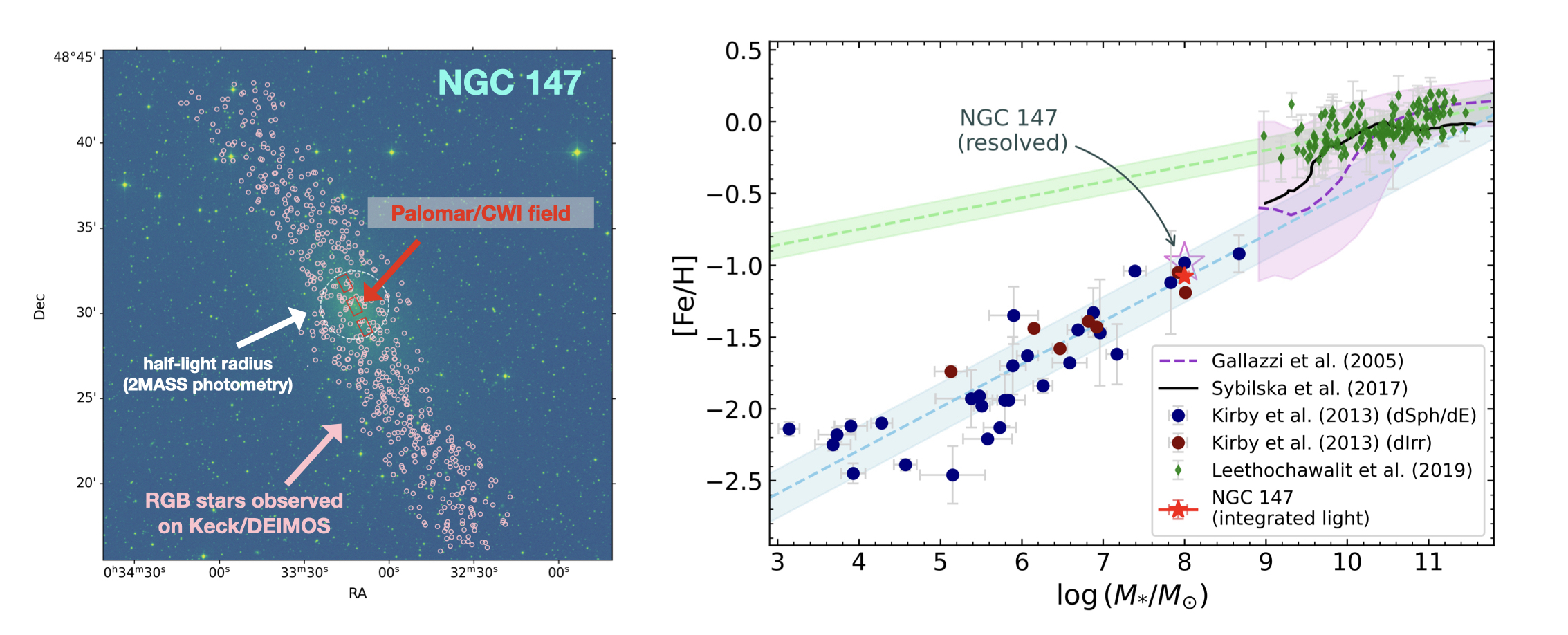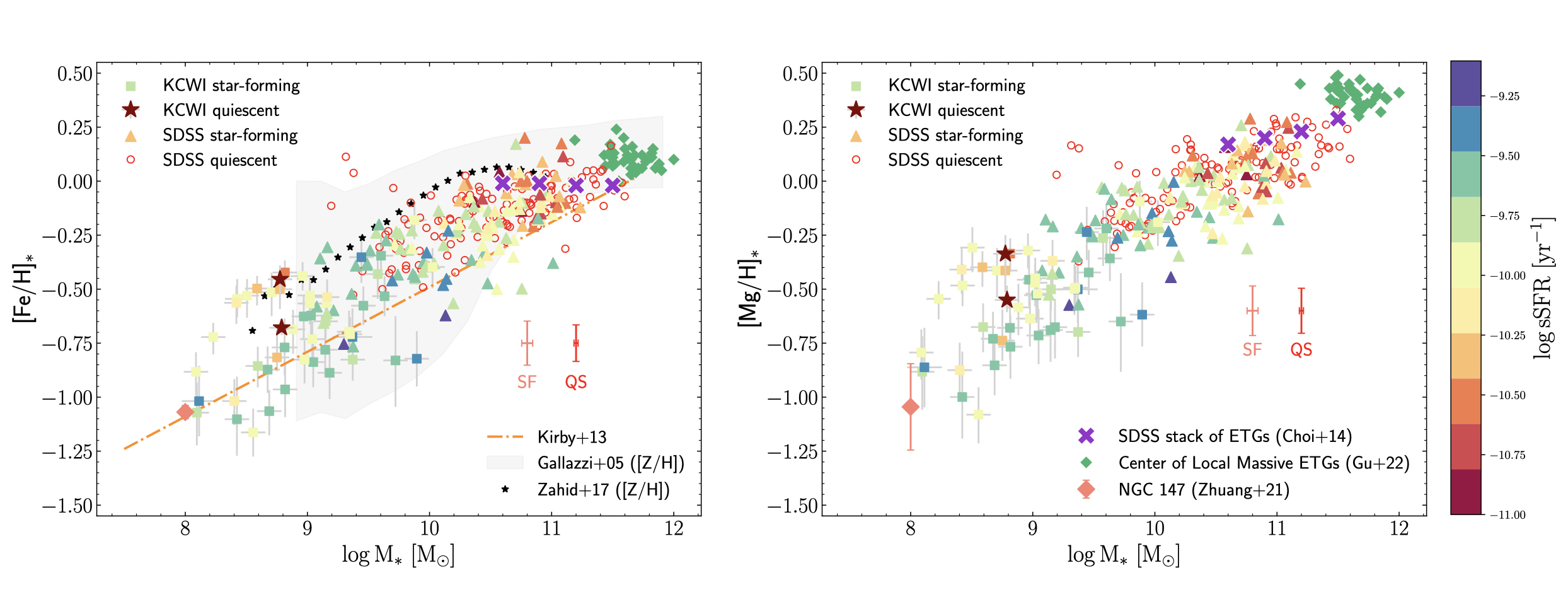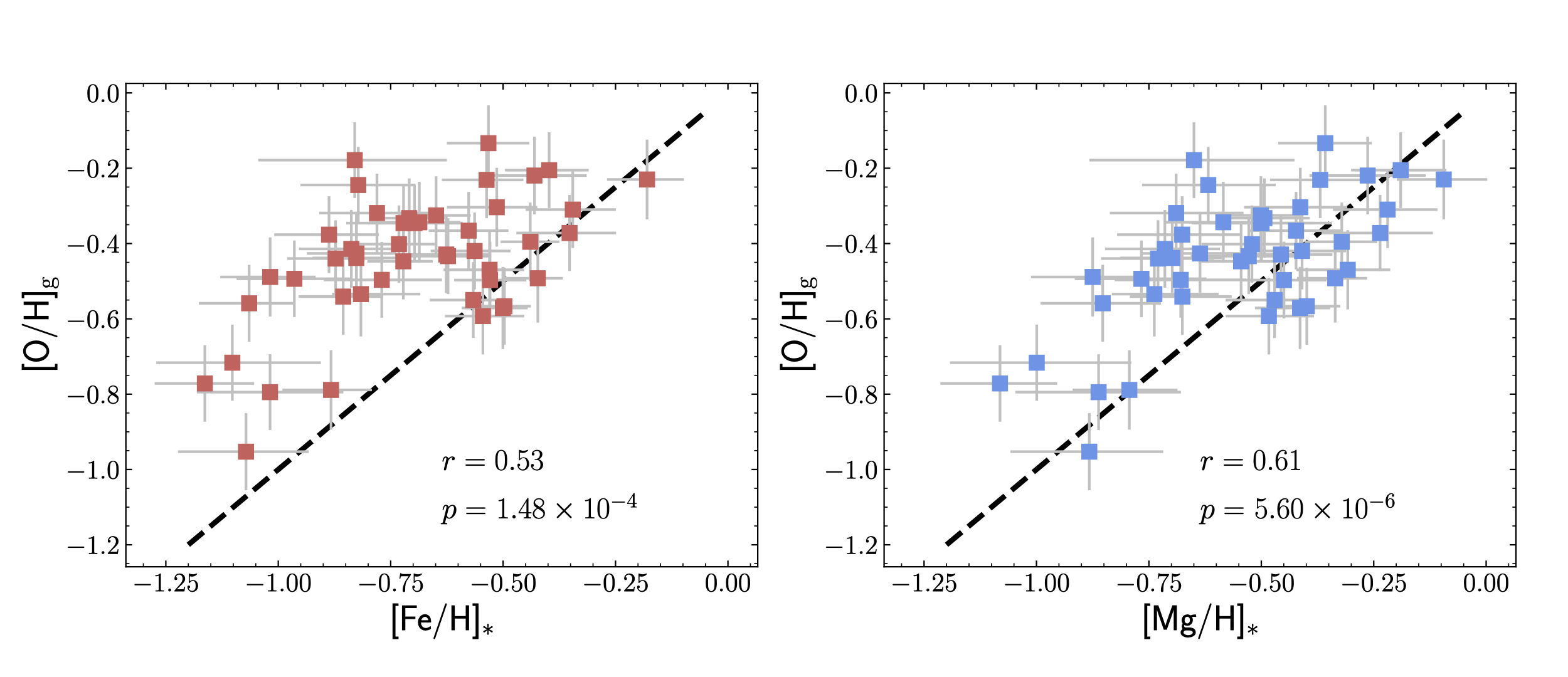MZR
Mass-metallicity relations for multiple elements in the local universe
The stellar mass-stellar metallicity relation (MZR) is an essential approach to probing the chemical evolution of galaxies. It reflects the balance between galactic feedback and gravitational potential as a function of stellar mass. However, the current stellar MZR of local dwarf satellite galaxies (\(M_{\ast } \gtrsim 10^{9.5} M_{\odot}\), measured from resolved stellar spectroscopy by Kirby et al. 2013) may not be reconcilable with that of more massive galaxies (\(M_{\ast } \gtrsim 10^{9.5} M_{\odot}\), measured from integrated-light spectroscopy by Leethochawalit et al. 2019). Such a discrepancy may result from a systematic difference between the two methods, or it may indicate a break in the MZR around \(10^{9} M_{\odot}\).

In Paper I (Zhuang et al., 2021), we obtained the integrated-light spectrum of the central region (within 1\(R_e\)) of NGC 147 using the Palomar Cosmic Web Imager. We applied the same full-spectrum fitting method used in Leethochawalit et al. 2019 to NGC 147, and compared the new integrated tellar metallicity estimate with the existing measurement from resolved stellar spectroscopy by Kirby et al. 2013. As shown in the right panel above, the two metallicity measurements are consistent within 0.1 dex. On the other hand, the high-mass MZR overpredicts the metallicity by 0.6~dex at the mass of NGC 147. Therefore, our results tentatively suggest that the discrepancy between the low-mass MZR and high-mass MZR should not be attributed to a systematic difference in techniques. Instead, real physical processes cause the transition in the MZR.
To better understand the shape of the stellar MZR in the transition zone between the local dwarf satellite galaxies and the massive field galaxies, I am leading a Keck observing campaign to acquire KCWI data of low-mass galaxies with \(M_* \sim 10^{8-10} M_{\odot}\) (mostly star-forming) to measure their elemental abundances. So far, we have observed 56 galaxies (46 star-forming and 2 quiescent), 46 of which have been published in Paper II (Zhuang et al., 2024).

In Paper II (Zhuang et al., 2024), we developed a novel technique “two-step method” to meausure [Fe/H] and [Mg/Fe] of the star-forming and quiescent galaxies in our KCWI sample. We also applied this method a selected SDSS sample of the local star-forming and quiescent galaxies to construct the high-mass stellar Fe- and Mg-MZRs. We find that the stellar abundances of the star-forming galaxies, especially those in the KCWI sample, appear to have secondary dependence on the specific star formation rates (sSFR). In other words, sSFR is paritically responsible for driving the scatter in the stellar Fe- and Mg-MZRs in the transition zone.

Besides, using the gas-phase metallicity derived from the strong line calibration, we make the first-ever apples-to-apples comparison of \(\alpha\) elements (Mg\(_*\) and O\(_{\rm gas}\)) in the stellar population and the ISM. As expected, the [Mg/H]\(_*\)–[O/H]\(_{\rm g}\) relation is much tighter than the [Fe/H]\(_*\)–[O/H]\(_{\rm g}\) relation, because of the similar production processes of $\alpha$ elements. The excess of [O/H]\(_{\rm g}\) compared to stellar abundances as well as the anti-correlation between sSFR and stellar abundance suggests that galaxy quenching of intermediate-mass galaxies at \(M_*\sim 10^{8-10}M_{\odot}\) is primarily driven by starvation.
At the moment, I am working on the spatially-resolved properties of the KCWI sample, aiming to link the gas and stars on the local scale. Stay tuned!
References
2024
- ApJMetals in Star-forming Galaxies with KCWI. I. Methodology and First Results on the Abundances of Iron, Magnesium, and OxygenAstrophysical Journal, Sep 2024